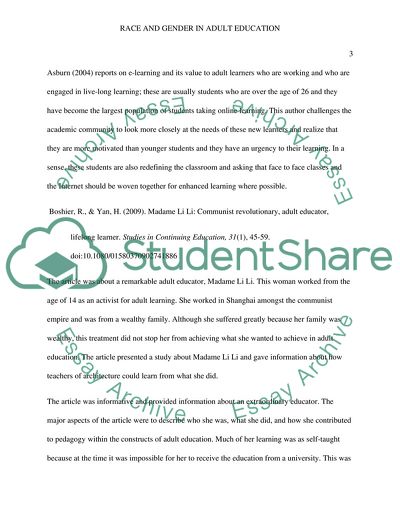Cite this document
(Race and Gender in Adult Education Annotated Bibliography Example | Topics and Well Written Essays - 2250 words, n.d.)
Race and Gender in Adult Education Annotated Bibliography Example | Topics and Well Written Essays - 2250 words. https://studentshare.org/education/1756004-develop-an-annotated-bibliography-on-literature-related-to-curriculum-development-of-adult-education
Race and Gender in Adult Education Annotated Bibliography Example | Topics and Well Written Essays - 2250 words. https://studentshare.org/education/1756004-develop-an-annotated-bibliography-on-literature-related-to-curriculum-development-of-adult-education
(Race and Gender in Adult Education Annotated Bibliography Example | Topics and Well Written Essays - 2250 Words)
Race and Gender in Adult Education Annotated Bibliography Example | Topics and Well Written Essays - 2250 Words. https://studentshare.org/education/1756004-develop-an-annotated-bibliography-on-literature-related-to-curriculum-development-of-adult-education.
Race and Gender in Adult Education Annotated Bibliography Example | Topics and Well Written Essays - 2250 Words. https://studentshare.org/education/1756004-develop-an-annotated-bibliography-on-literature-related-to-curriculum-development-of-adult-education.
“Race and Gender in Adult Education Annotated Bibliography Example | Topics and Well Written Essays - 2250 Words”. https://studentshare.org/education/1756004-develop-an-annotated-bibliography-on-literature-related-to-curriculum-development-of-adult-education.


